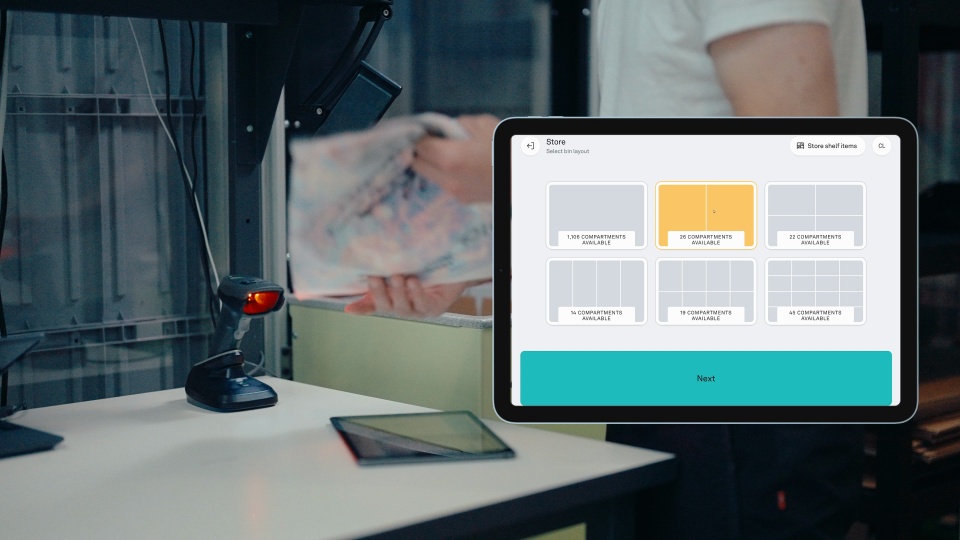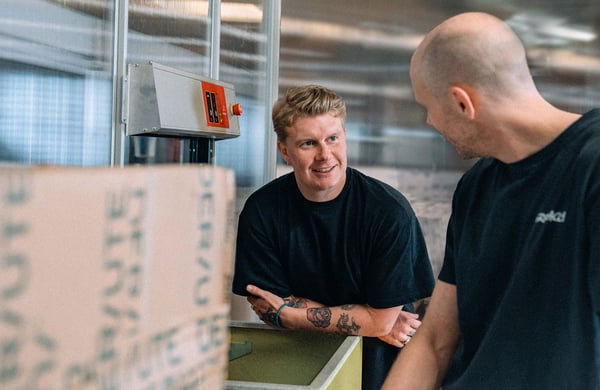Into the Cube
Using the same technology as AutoStore, the Pio system was inspired by a simple yet brilliant idea from Ingvar Hognaland: “Why store things like dominos, when we can store them like a Rubik’s Cube?” By arranging inventory in a cube, we’re able to significantly reduce wasted air, maximizing storage density so much that in fact, we’ve created the densest storage system in the world.
Slotting & Warehouse Efficiency
The dreaded job of “slotting” is one of the most wasteful processes in warehouses today, adding unnecessary costs. Originally, slotting was a method of reducing travel distances in traditional warehouses. However, the increase in inventory means using manual labor to rearrange is incredibly inefficient—often there are simply too many products.
In a way, the performance of any inventory storage system, including in manual warehouses, is a function of slotting. Even in traditional automated storage and retrieval systems (ASRS), top-selling items are stored at the front of aisles or outside of triple-deep locations. This type of static slotting usually fails in the end, as item usage is too variable by season to be predictable. Though slotting is crucial, it's too time-consuming to be delegated to manual labor, especially as the pace of ecommerce continues to rise. The solution for warehouses? Robots, of course.
Slotting with Pio
Pio eliminates manual slotting by following three key principles:
- Inventory is in a state of flux, constantly growing and changing.
- Order demand predicts the priority of bins.
- New inventory goes faster and can be placed on top of older inventory.
Unaffected by how much product volume and arrangement of individual SKUs, our system uses what we call “natural slotting” to achieve high performance. Used bins are returned to the uppermost layer of the grid, and over time, bins containing slower-moving inventory move to the bottom of the stack. This natural arrangement of bins optimizes accessibility by demand, so our robots rarely have to dig to the very bottom of a stack.
Do robots spend a lot of time digging?
Our robots often dig for bins during breaks and overnight, while other systems sit idle. They also proactively prepare bins based on warehouse management system (WMS) priorities. This means bins are pre-arranged for quick order fulfillment. Note that it’s always possible to retrieve a bin on demand, and a bin at the bottom of the grid typically takes roughly 3.5 minutes to retrieve.
However, accessing the majority of bins will require no digging due to this tendency: in most warehouses, 80% of products ordered make up only 20% of the total inventory. Based on this 80/20 example:
- 39% of bins stay at the top with zero digging
- The average bin is located just 2.5 cells deep in the stack and takes about 27 seconds to retrieve
- The bottom half, or 8 levels, represent less than 5% of regularly accessed bins
Competing ASRS systems are more spread out, leading to longer travel distances and wasted time navigating warehouse structures and aisles, or waiting in long queues at workstations. Compared to these systems that move bins vertically by climbing or using lifts, Pio is often faster at fulfilling orders due to these unique features:
- High storage density makes travel distances 25-40% shorter
- A wide-open grid at the top provides a high-capacity environment for robots to move efficiently
- No time is wasted waiting when bins are delivered to access ports
- No single points of failure
Cube Simplicity
Pio makes storage and retrieval of your inventory a no-brainer. Think of our system as a high tech “vending machine” that keeps your products at your fingertips, ready to retrieve products for orders in a flash. You store items in the cube and leave the rest to the robots—so that you can focus your energy on growing your brand and your business.





.jpg?width=600&name=Beauty-Welness-Pio-04743%20(1).jpg)